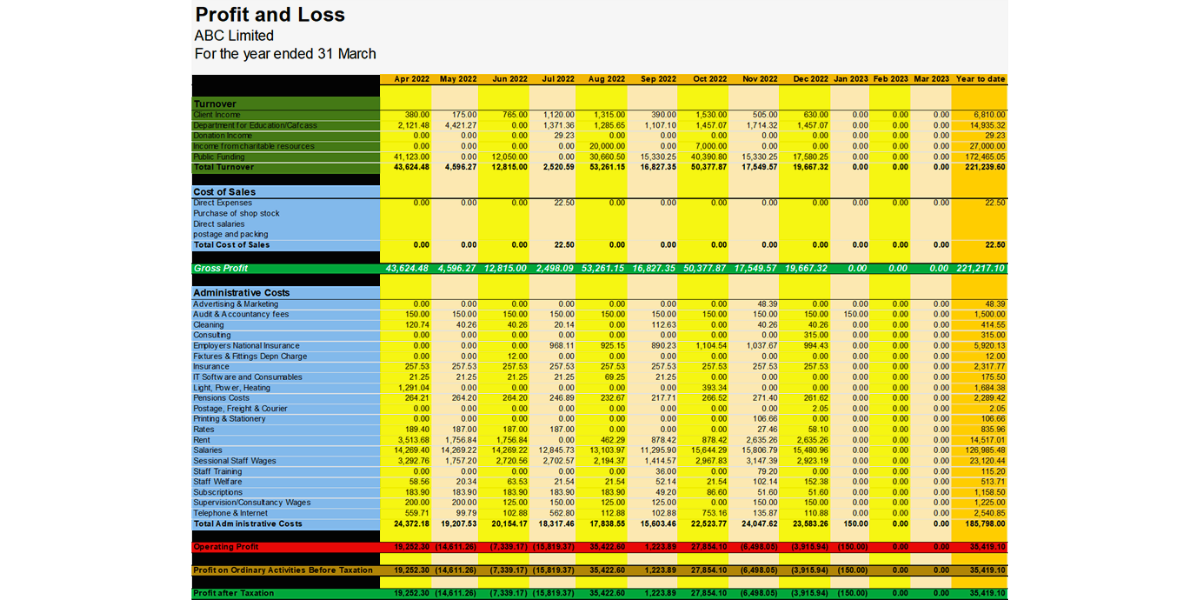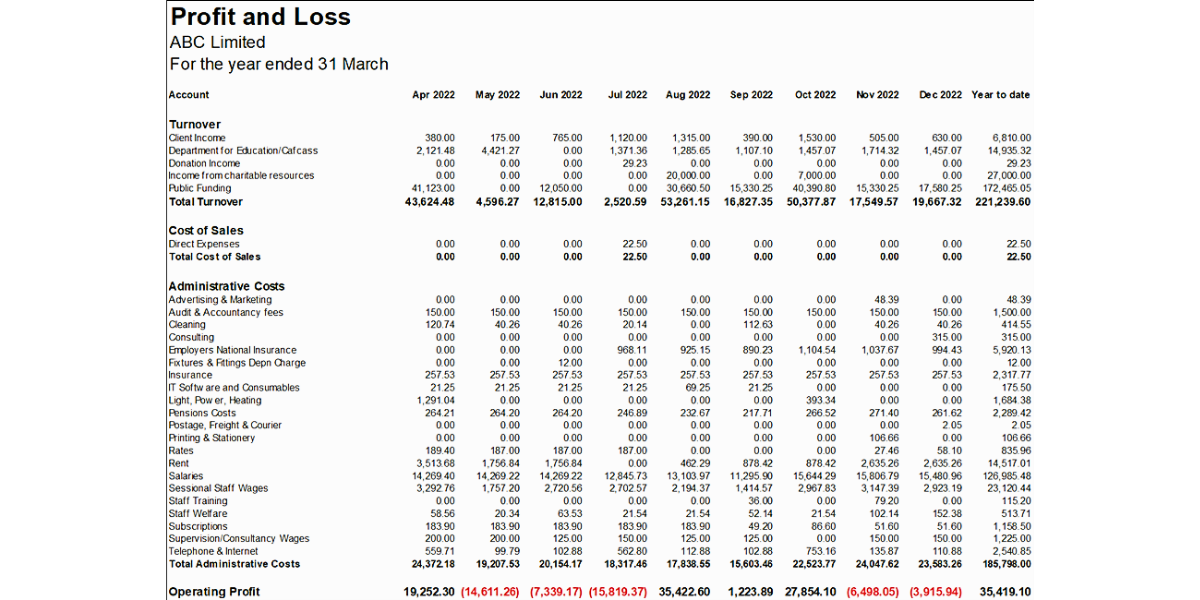7 Key Tips That Will Transform Your Reporting
Reporting is a key skill for finance professionals and so it makes sense to make sure you are at the top of your game.
Good reporting doesn’t have to be hard, in fact, great reporting is usually easy but there are some common mistakes we make that can obscure the message we are trying to convey.
So check out our tips and instantly improve your reporting;
- Organise your data for reporting
- Less is more
- Consistency
- The three legs
- Don’t destroy your credibility
- Think about where and how people use your reports
- Decide what the point is
- Reporting - the forgotten child
Organise your data for reporting
As we said in the introduction, good reporting shouldn’t be difficult but so often it can be a real pain.
You make life easy on yourself by organising your data in a way that supports reporting rather than making it more difficult.
The starting point has to be to have a sensible chart of accounts and too often we find that reporting is hampered by having an inconsistent approach or accounts being used incorrectly.
Your accounting system should have a good amount of analysis codes that can be used to slice and dice your data to make reporting easier. Using department, project and income codes helps to put transactions in the right ‘basket’ so that reporting can flow naturally.
You need to avoid the situation where you are sifting through a spreadsheet trying to dig out expenses for a report from a set of incomplete descriptions. If your accounting system doesn’t have good analysis capabilities then find a new one!
Less is more
One of the big temptations, especially when you are using a very flexible tool like Excel is to include as much information, formatting and design as you possibly can.
This is a natural mistake to make. You want to show that you know what you are talking about, that you have done lots of research and that you know how to use Excel.
But great finance people know that less is more when it comes to reporting.
Take a look at the below.

Everything on that spreadsheet means something but because it is so busy the reader can’t work out what the important information is.
Remove the noise and;

The important numbers are shown in red, the rest is just filler.
But then remove more noise and;

Now users can see exactly what the important numbers are and why they have changed.
Sometimes the aim of reporting isn’t to give people all of the information, it is to point them to the important bits and then prompt them to ask questions.
Consistency
Consistency is really important because when we read a report we are almost setting up a template for our brain to follow.
For example in the above panel negative numbers are shown in red. What happens if we then start showing negative numbers in black with brackets?
When we change the template our brain gets confused and has to spend time resetting its template.
So be consistent. Use the same type of formatting across your reporting including colours, number format and font and your readers will silently thank you.
The three legs
Everyone takes in information using different inputs.
Some people love numbers
Some people prefer words.
Some people enjoy pictograms.
So make sure your reporting has a mixture of things. Present your P&L with a commentary and a graph for example. You’ll find that you get more engagement if you remember the three legs of words, pictures and numbers.
Don’t destroy your credibility
Accuracy is important.
It’s important for its own sake but it is important in terms of credibility. If your report contains an obvious error on page 1 everyone will be wondering if the information on all the following pages is true.
So getting the numbers right is important but also being balanced in your reporting is important.
Avoid hyperbola in your commentary and don’t be selective in your numbers because people will instantly notice that you have an agenda, which is a great way to destroy your credibility.
Think about where and how people use your reports
Where people will be reading your information makes a big difference to how you report and deliver it.
If you have a non-executive director who travels into the board meeting on the train. Internet is patchy and it may be a pretty noisy location.
You may want to give them your reports on paper as the internet could be patchy and you’ll want to keep it simple and headline as taking in complex data is going to be difficult.
So think about your users, how they will consume the information you provide and what they want out of it.
Decide what the point is
This is perhaps the single most important tip we can possibly give.
Before you design any reporting at all, think about what the point is that you want to convey.
What action do you want people to take as a result of your report? What point do you want them to discuss? What levers do you need them to pull?
The point of your reporting will naturally dictate what you report and how you report it.
Reporting - the forgotten child
One of the big problems with reporting is that it comes at the end of the process.
Often, people spend a lot of time learning how to use systems, how to analyse data and how to manage a team.
Rarely do finance leaders spend time developing their reporting skills.
If you want to stand out and provide the maximum value to your organisation then make reporting your latest persona development task and report like a pro.
Was this article useful? Try:
- 8 Golden Rules for Successful Finance Projects
- 5 Basic Mistakes New Finance Managers Make
- Revealed; The Biggest Drain On Finance Time
If you're looking for more information on finance and accounting then check out our Accounting Industry Articles or our Accounting Hub.
Caxton Payments is an alternative to traditional banks, established over 20 years, we help businesses make faster payments more reliably. We offer streamlined processes, automation through API and a collaborative solution to complex payment issues all from a single platform. Our payment capability extends from business expense management, to payroll payments, supplier payments, and currency risk management. We also offer personal prepaid travel cards and international money transfer.



